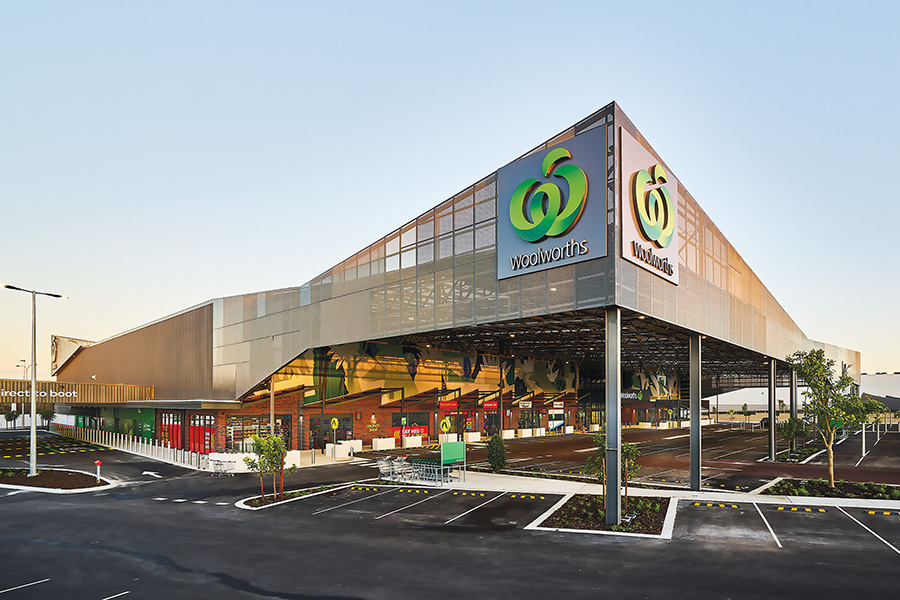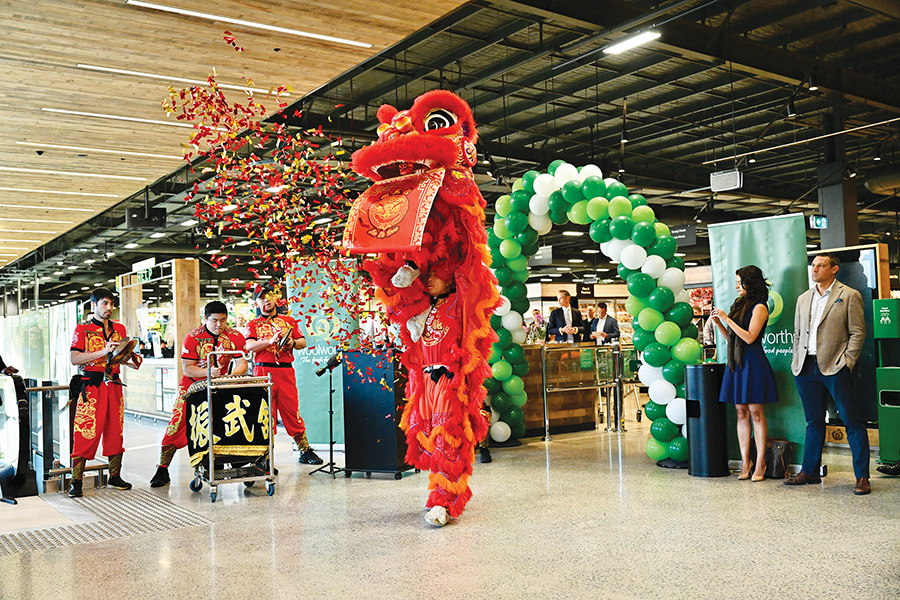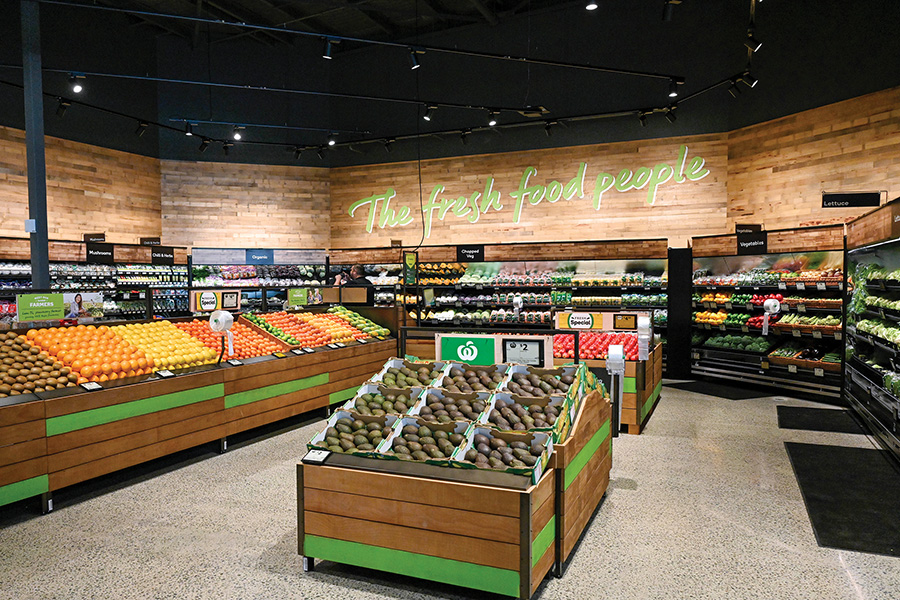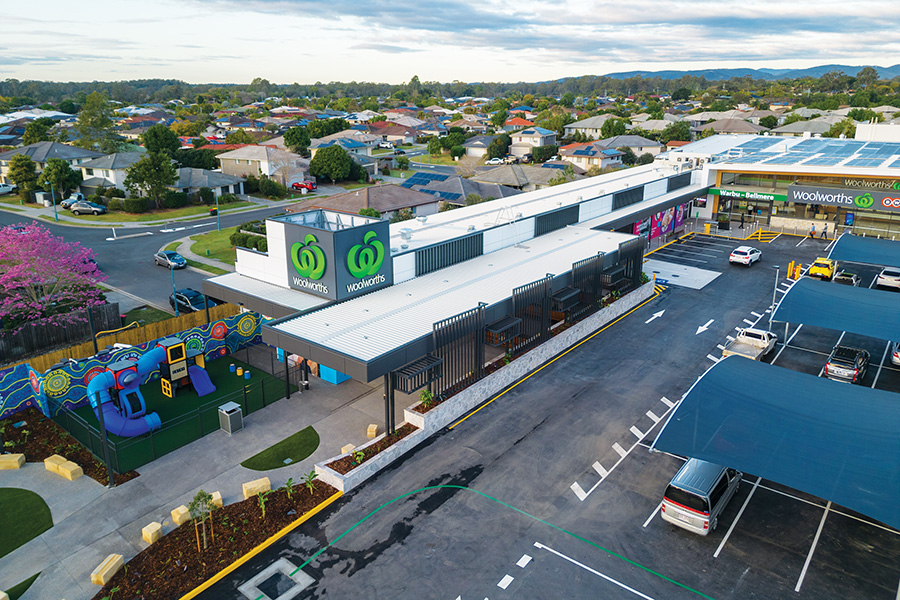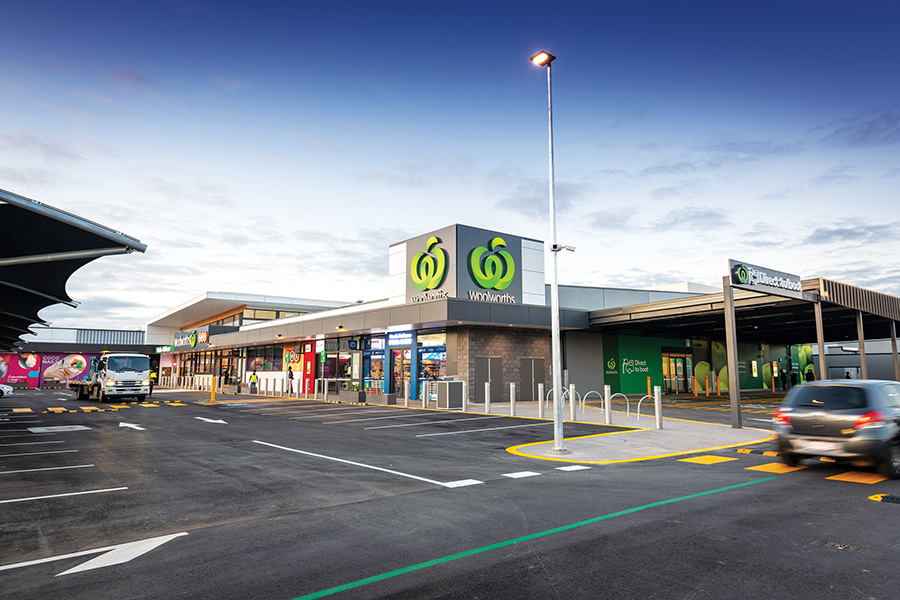In terms of ‘number of centres developed’, Woolworths is the largest shopping centre developer in Australia! As interesting as that fact may be, Woolworths Property Division’s major distinction from its peers is its ‘orientation’. Its a developer and manager with a ‘retail orientation’. It develops and manages a centre, with a fundamental focus on the major tenant successfully trading there for 50 years or longer. This in turn leads to a ‘relentless focus’ on what the customer wants. In terms of online purchasing, Woolworths believes that its store network is fundamental to its business, and that without bricks-and-mortar retail, they can’t evolve their e-commerce business.
Some years ago, at a time when e-commerce was in its infancy, many commentators opined about the demise of bricks-and-mortar retail. Articles appeared in newspapers across the globe and the media in general featured ‘experts’ forecasting the closure of shopping centres as well as the impending failure of many retail chains. Doom and gloom prevailed in the media. That’s testimony to the fact that during the past two decades or so, quality and authoritative journalism has given way to sensationalism; expert commentary has morphed into shock-jock rhetoric, and logical reasoning has been replaced by knee-jerk reaction.
The total fallacy that e-commerce is in direct competition to bricks-and-mortar retail has long been dispelled – the reality is that the two are intertwined because each enhances the other – and integration delivers success.
At Woolworths, there’s no division between e-commerce and property, there’s no ‘either/or’; it’s simply not a case of ‘bricks-and-mortar retail or e-commerce’ – that’s considered a spurious statement – instead, there’s an integration.
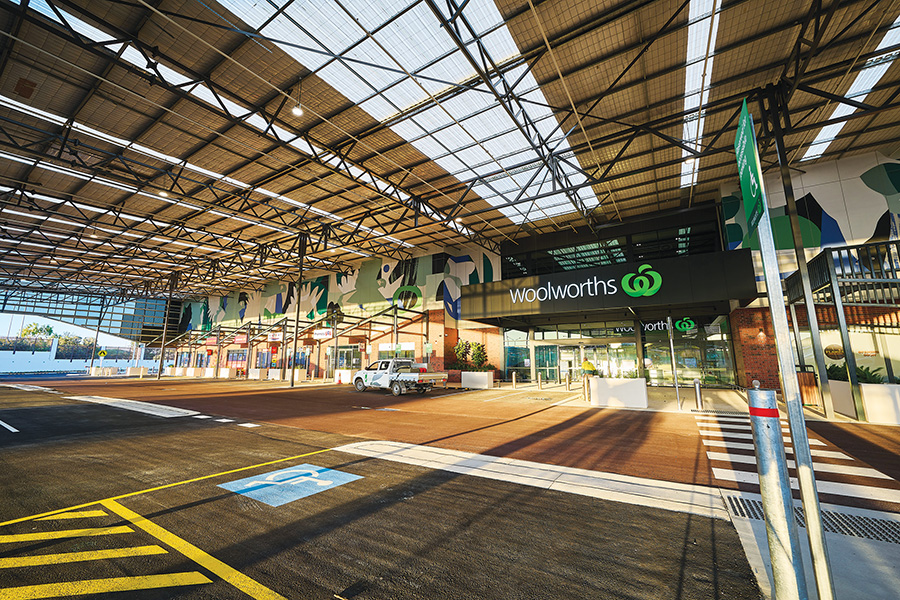
Woolworths Clarkson, WA
Nejmi Elia’s title says it all; she’s Head of Property, E-commerce. At Woolworths, she tells us their strategy is customer led – Woolworths delivers on what the shopper wants and the demands are changing.
In the beginning, ‘Home Delivery’ was the flavour, but that’s now giving way to ‘Direct to Boot’. In just two-and-half years, e-commerce penetration at Woolworths has increased from 4% to more than 12%. Instead of walking the aisles, customers now use the Woolworths App, which is linked to their Everyday Rewards accounts, remembers what they bought previously and reminds them that they may have forgotten something. The customer orders groceries, selects a preferred time for collection – in periods of an hour, say between 3pm and 4pm. The customer advises when they leave home and Woolworths staff get the order ready. On arrival at the store the customer advises their delivery bay and the order is placed by a team member into their boot!
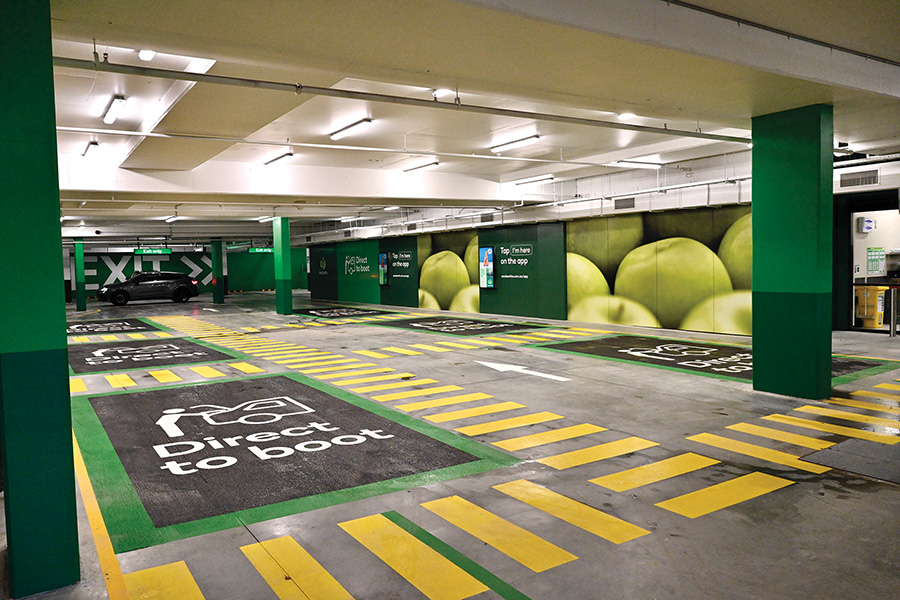
Direct to Boot at Chatswood East, NSW
Other options are on offer of course; there’s Home Delivery and also Milk Run powered by Woolworths. The latter is super convenient; if you run out of milk, need tea or coffee, perhaps sugar; you can order online and it’s delivered to your location, in most cases within 20 minutes!
It’s a new way of shopping and, of course, has significant implications on how property is managed, how buildings are modified or designed so the Woolworths Property Division is at the forefront of these new initiatives.
As Ralph Kemmler, Managing Director of Property says: “The store network we have is fundamental to our business and the key point is that without bricks-and-mortar retail, we can’t evolve our e-commerce business.”
The changes to the Woolworths operation in general and the variation in how different properties function, is complex.
Woolworths has a number of Customer Fulfilment Centres (CFCs), which are ‘dark stores’ – they’re basically warehouses, industrial sheds that function solely via e-commerce. Rochedale in Queensland houses one that was just completed last year, while another has been completed in the past few months in Caringbah (NSW).
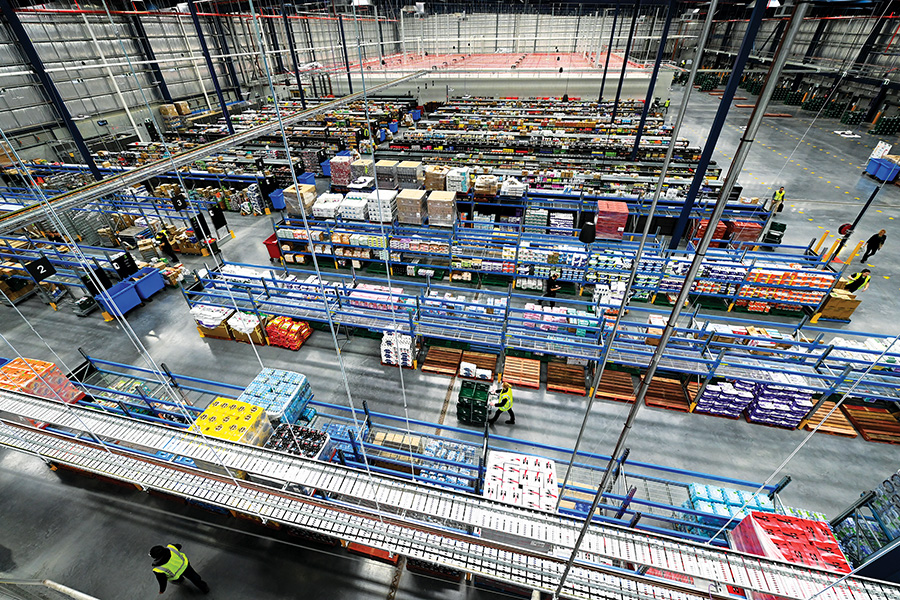
Woolworths’ Customer Fulfilment Centre in Rochdale (QLD).
Separately Woolworths operates e-stores, which are about 2,500m2 in size and are attached to a supermarket, but aren’t customer facing. About 60% of the e-store is automated and 40% is manual for the handling of bulky goods and fruit and vegetables. These e-stores focus on home delivery to high density catchments, however, they also provide a Direct to Boot service for the convenience of Woolworths’ customers.
As Jon Savell, Director of Property Portfolio, Leasehold, mentioned: “We partner with a diverse range of landlords and developers to grow and optimise our store network across Australia, providing customers with optimal shopping convenience and experiences.”
Savell’s team looks after the e-commerce aspects highlighted above, and a recently completed replacement store in Cairns reinforces his comment. The Woolworths’ Raintrees store was replaced (within the same centre) earlier this year, alongside Angaet Property Management’s centre refurbishment, to reposition the centre. The store increased by 1,000m2, added Woolworths’ platinum DTB solution and is a key online hub for the Cairns region.
Savell added: “During the past few years, we have significantly increased our e-commerce penetration by activating more than 500 sites since 2021, bringing the total to more than 700 sites as it stands now.”
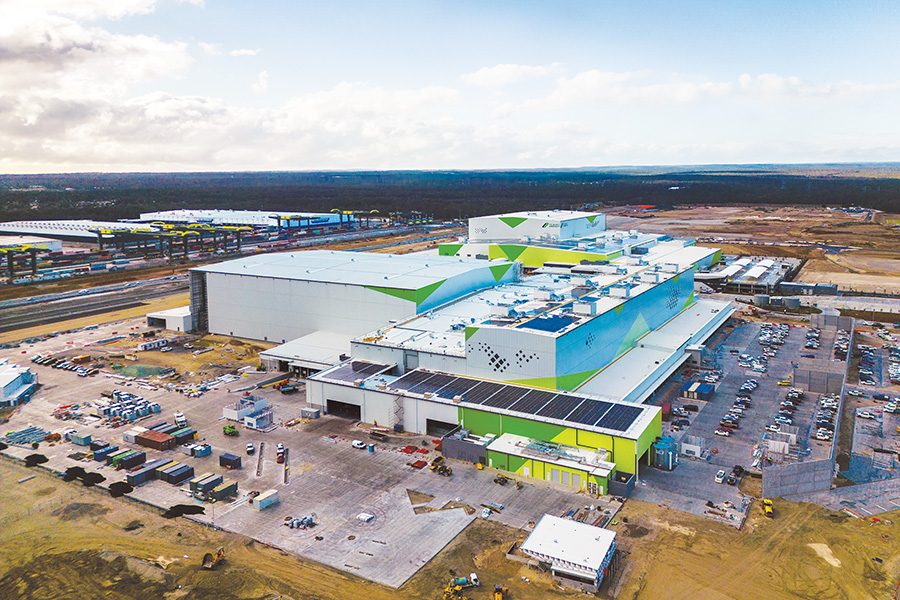
Moorebank Intermodal Precinct (NSW)
But it’s not just the world of e-commerce that the Property Division sees changing. One of Woolworths’ biggest ever property investments is currently under construction at the Moorebank Intermodal Precinct (Sydney). This precinct is an ‘inland port’ directly linked by rail to Port Botany. Products are loaded on trains, directly from ships and transported to the precinct. Woolworths has two of the largest facilities there – more than $1 billion worth of investment – where products are unloaded, unpacked and sorted all via automation. It’s state-of-the-art, with supply of these products subsequently being selected and loaded into trucks for distribution nationwide. The two structures are separated, one is for national delivery to more than 1,000 stores, the other is a ‘regional’ facility servicing stores in NSW only.
Our industry is well aware of Woolworths’ size; it’s the largest supermarket retailer in Australia with more than 1,000 stores, with an additional 191 stores in New Zealand. What might not be known widely is that Woolworths is also Australia’s largest private employer with 180,000 team members, and the company was voted Australia’s most trusted brand by Roy Morgan for a third year in a row.
What’s definitely not realised, is that the Woolworths Property Division, in terms of numbers of centres, is the largest shopping centre developer in Australia!
Throughout the years, Woolworths Property has developed literally hundreds of centres across Australia, mostly smaller centres anchored by a supermarket, however, there are many Mini Guns developed by the Property Division, as well as Little Guns often containing a supermarket plus a Big W. The point is stressed because, of course, this developer is far more influenced by retail issues than other traditional developers, and that factor throws up some very interesting points to consider.
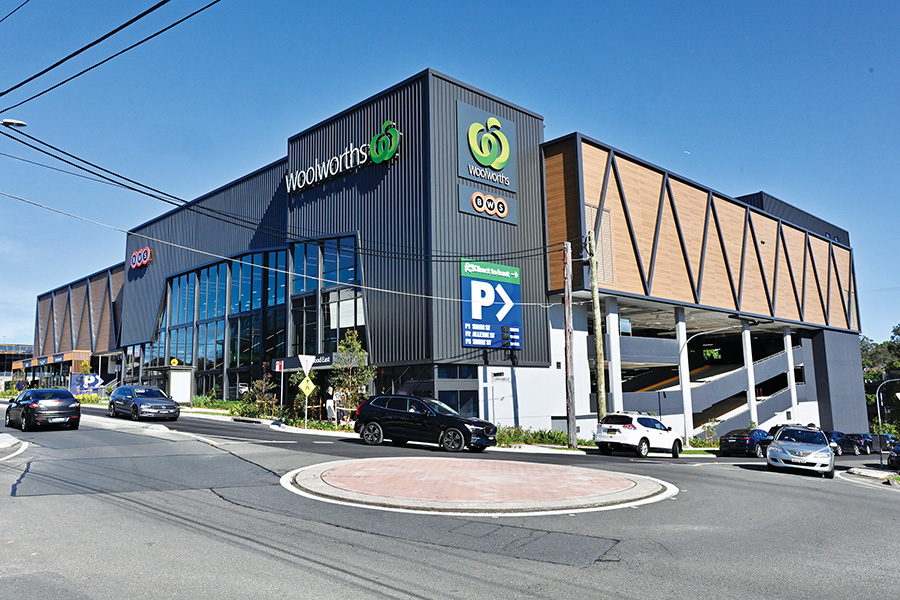
Chatswood East, NSW
Woolworths connects with millions of customers a week through engagement across online platforms (eg. the Woolworths app, Everyday Rewards loyalty program and the Voice of Customer (VOC) program). The latter helps Woolworths to gain feedback on stores, car parking, e-commerce and a whole range of issues affecting store development and management. As the world of e-commerce evolves, Woolworths is at the cutting edge of monitoring new customer demands and shopping behaviour; it’s constantly diagnosing statistics, interpreting new customer wants and analysing how to service new customer preferences.
This focus on the ‘retail issues’ gives the Property Division unique insights into a changing world. Says Kemmler: “Our relentless focus on what the customer wants has a major influence on how we develop and manage our property – whether it’s leased or owned.”
When the Woolworths property team expands on the issue, you begin to understand the relevance. For example, we’re told that today, one in five customer orders are collected from stores that don’t service their main delivery address – meaning that ‘catchments’ are becoming more fluid. Also of note is what the company calls the ‘school run trend’ – of more than 11 million collection orders in the last year, 22.5% were during the hours of 8am to 9am or 3pm to 5pm – the ‘school run’ effect. So, parents are dropping off, or picking up children from school, and collecting the groceries, delivered directly into their car boots, en route! And 20% of them are using supermarkets not closest to their homes. “All that,” says Kemmler, “has a direct influence on store and centre design.”
The e-commerce component of Woolworths’ sales has grown some 37.8% since February 2019 to date, accounting for more than $5 billion in sales or roughly 8% of total revenue in FY23.
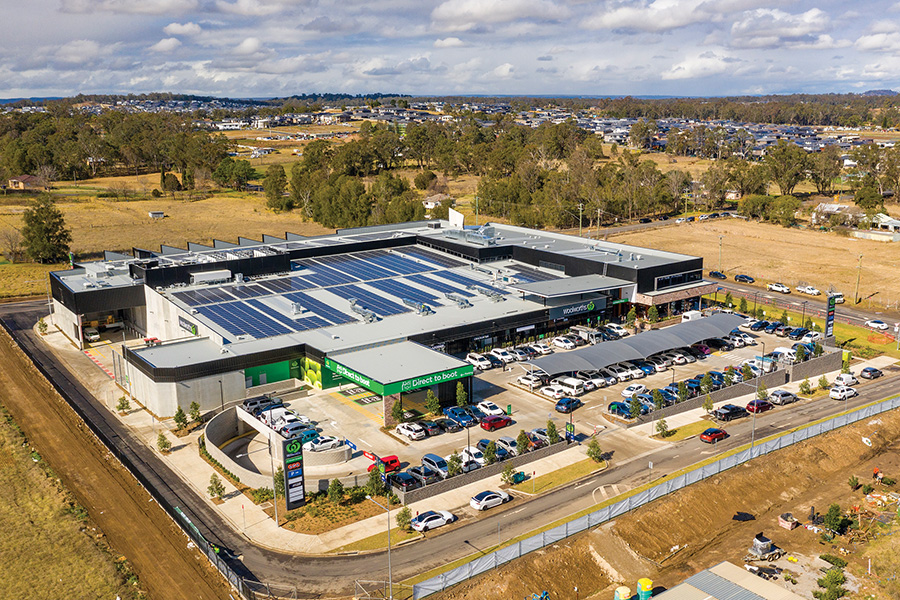
Woolworths Leppington Village, NSW. (Image by Dallas Kilponen/Woolworths)
The online visitation (including website and apps) in First Quarter 2020 was 6.5 million a week; at the end of FY23, it had risen to 16.3 million a week – an increase of 150% p.a. In the past three years, Direct to Boot has been introduced to more than 700 stores with a further 63 forecasted to open in FY24. Meanwhile, Home Delivery accounts for some 11 million deliveries a year.
But of course, alongside the company’s renewed focus on the e-commerce aspects, Woolworths Property continues with its traditional function of developing stores and centres. Leppington Village in Sydney’s south-west is the latest addition. Construction began in 2021 on the 8,000m2 centre, which features a full-line Woolworths with Direct to Boot pick-up facilities. The centre features 27 specialties including a medical centre, pharmacy, 24/7 gym, services, restaurants and cafes. It’s a 5-Star Green Star development with some 650 solar panels on the roof generating more than 400-megawatt hours of electricity each year.
As part of the Woolworths Group’s 2025 sustainability plan, Woolworths Property is on track to deliver part of its Planet Goal, being Net positive carbon emissions by 2025.
- Woolworths Chatswood East, NSW
- Woolworths Chatswood East, NSW
Yet another brand new neighbourhood centre was completed late last year in Sydney’s Chatswood East. The Woolworths supermarket, as usual, was developed to cater to the affluent surrounding market, featuring an extensive Fruit and Veg component, plus 100% Australian meat with a variety of fresh seafood on offer as well as stone baked breads and custom cakes, which are prepared in-house at the full production bakery. The store has a six-bay Direct to Boot facility where Direct to Boot orders are fulfilled, on average, in less than two minutes from the time the customer drives into the Direct to Boot area.
Other notable developments just completed include two new neighbourhood centres in Clarkson (WA) and Bellmere (QLD) along with a leasehold store at Perth Airport (WA). Meanwhile, a number of significant developments are also making progress across Mosman (NSW), North Parramatta (NSW), Nedlands (WA), Rosanna (VIC) and Kellyville (NSW). Fascinatingly, the stores that reside at both Clarkson and North Parramatta are using the existing Bunnings Warehouse shell that was converted when Woolworths purchased each site!
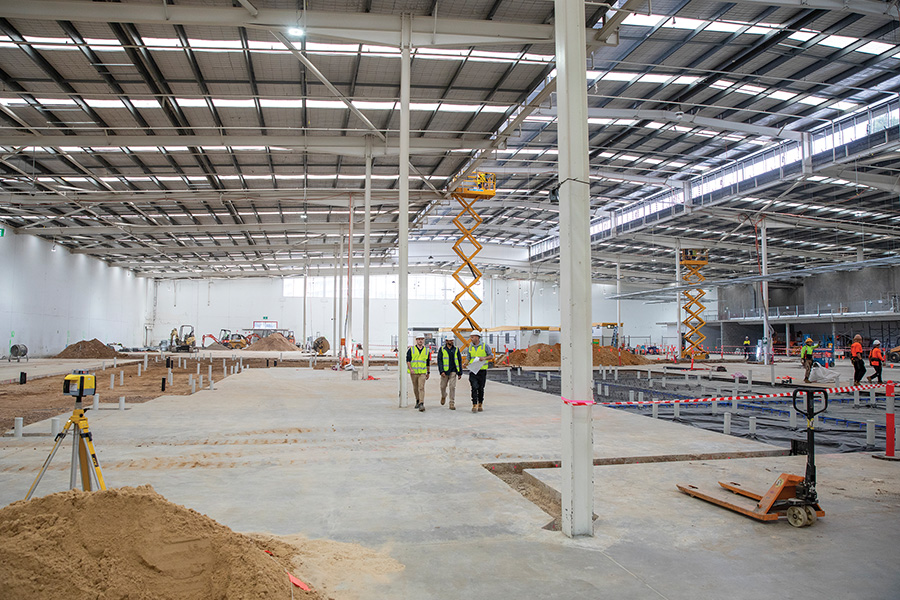
The existing Bunnings Warehouse shell at North Parramatta. (Image Dallas Kilponen/Woolworths)
The Property Division’s Asset Management portfolio comprises roughly 35 retail centres, considered to be either freestanding supermarkets or larger neighbourhood centres, together with additional land used for future developments. The team is responsible for ensuring the retail centres deliver a sense of place and serve their local communities for everyday needs and better customer experiences via a well-considered tenancy mix skewed to non-discretionary retail. The team is also responsible for Capital Transactions – disposing of retail assets and surplus land to recycle capital for future acquisitions and development projects.
The Property team is an expert division at Woolworths, with leadership at the forefront of the company’s expansion strategy. It’s a leadership team with a long-term viewpoint.
As Andrew Loveday, Director of Property Development and Jarrad Wilson, National Development Manager, point out: “We develop a centre for the long haul. We’ve got a supermarket that’s going to be there for the next 50 years, so we look at things that other developers might not consider. We do a similar job (to other developers) but our orientation is different; they are property development orientated, we’re retail orientated and that has a significant influence on how we develop.” Kemmler has a line for it, adding: “We bring the dynamics of retail into the world of property.”
- Woolworths Bellmere (QLD)
- Woolworths Bellmere (QLD)
This ‘retail orientation’ is constant throughout, even present at the earliest point of team recruitment – the Graduate Program. It’s a two-year program that looks for passion rather than specific expertise, says Christine Hogg, General Manager of Asset Management and executive sponsor of the program.
“We’ve recruited graduates who started out stacking shelves,” she tells SCN, “right now we’ve got existing and former graduates who’ve studied law, civil engineering, finance and technology – we’ve even had a school teacher from Brisbane. The program rotates through four key areas of the property lifecycle – Network Planning, Property Management, Asset Management and Development. The graduates learn the whole business then choose a direction, unlike experts who come in at one level and specialise. “If you have an interest in property but no specific property experience, you have equal opportunity to join,” says Hogg.
And again, what’s taught as a fundamental is that the customer is always in control. It’s a property division that’s driven by the customer; what the customer demands, is what’s developed.
This article is featured in the latest edition of SCN. Premium members can view the digital magazine here.


